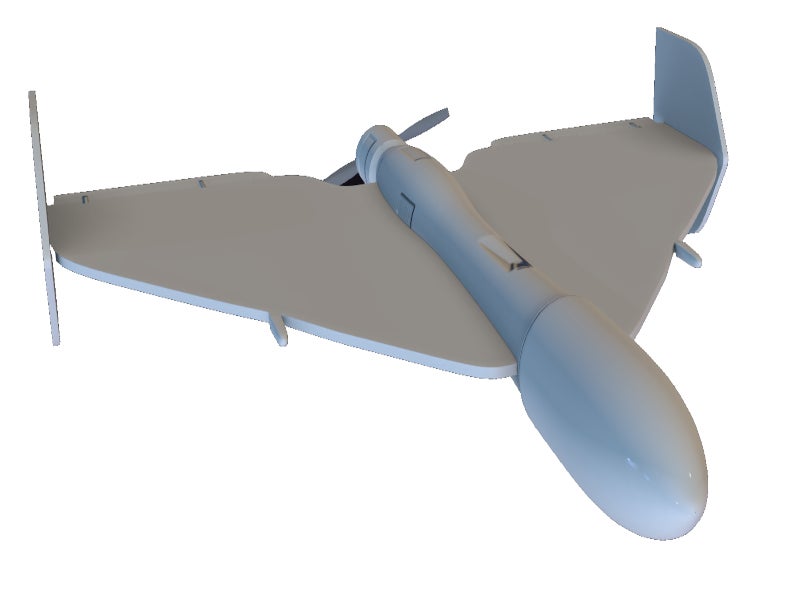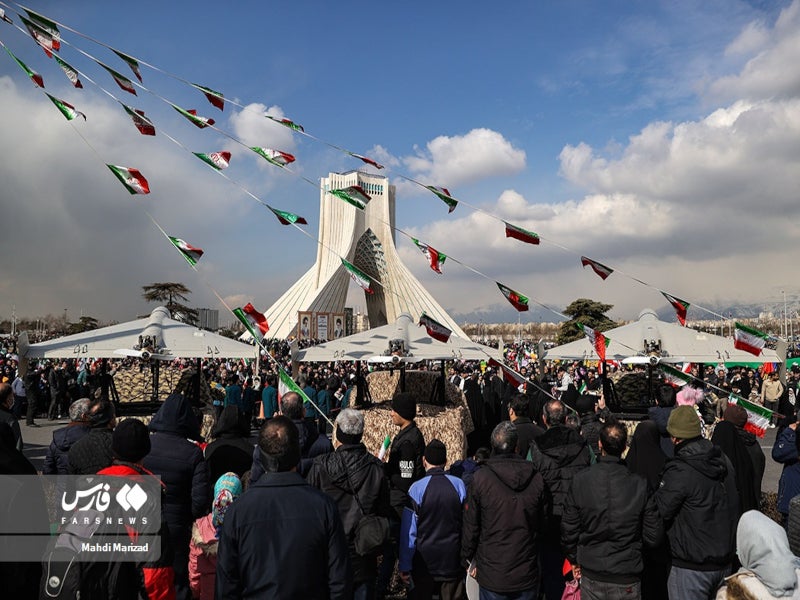Shahed-136 is a precision-attack loitering munition system developed by Iran Aircraft Manufacturing Industrial Company (HESA), which is a subsidiary of Iran Aviation Industries Organization (IAIO), a state-owned aerospace company controlled by Iran’s Ministry of Defense and Armed Forces Logistics.
The suicide drone has been in service with the Iranian military since 2021. Russia also imported Shahed-136 unmanned aerial vehicles (UAVs) to use in the war against Ukraine. The drones have been rebranded as Geran-2 or Geranium-2 by Russia.
According to the UK’s Ministry of Defence, Russian forces were likely to have launched at least 71 Shahed-series one-way attack UAVs against different targets across Ukraine since the beginning of March 2023.
Shahed Aviation Industries Research Center, a unit of the Islamic Revolutionary Guard Corps Aerospace Force (IRGC ASF), is responsible for the design and manufacturing of Shahed-series UAVs being used by Russia.
Shahed-136 design details
The Shahed-136 drone measures 3.5m long and 2.5m wide and weighs 200kg. It is designed with a delta-wing shape, with stabilising rudders at the tips. The fuselage of the aircraft is centralised and blended into the wings.
The portable assault drone can carry up to 40kg of warheads at its nose section and can be mounted and launched from a military or commercial truck.
Propulsion system and performance details
The Shahed-136 Kamikaze drone is launched using a rocket situated below the fuselage, which gets separated by a pod jettison system immediately after launch.
Further, a conventional Mado MD550 four-cylinder, two-stroke piston engine situated at the rear of the fuselage drives a two-blade pusher propeller to move the drone forward.
The drone can achieve a maximum speed of 185km/h and is claimed to have a range of 2,500km.
Other variants of the Shahed-series UAVs
Iran has developed several UAVs within the Shahed family of drones for different operations.
Shahed-131, renamed Geran-1 by Russian forces, is a smaller version of the Shahed-136 drone. Shahed-131 is visually similar to the Shahed-136, but its wingtip stabilisers extend only up whereas those on Shahed-136 can extend both up and down.
Shahed-121 is an unarmed intelligence, surveillance and reconnaissance (ISR) variant, while Shahed-123 is another smaller drone within the family that IRGC had used in Syria in 2013.
The Shahed-171 drone, launched in 2014, is similar to the US UAV RQ-170, which was shot down by Iran in December 2011.
Shahed-129 is a reconnaissance and attack drone, which can carry a maximum payload of 400kg. It is claimed to have a range of 2,000km and a long endurance of up to 24 hours.
Shahed-149, also called Gaza, is the largest variant within the family, which is similar to the American MQ-9 Reaper UAV in shape, size and role. It is a new medium-altitude long-endurance (MALE) UAV launched by Iran in 2021.
Some of the other variants of the UAV include Shahed-141, Shahed-191 and Shahed-783.
Controversies surrounding Shahed-series UAVs
The Iranian-design Shahed-series drones have been controversial over the years because of their alleged use in launching attacks in Syria, Ukraine and other countries.
In 2018, Israel claimed to have shot down a Shahed-series UAV, which allegedly infiltrated the Israeli airspace from Syria.
The US also accused Iran of using Shahed-136 UAVs to support Houthi rebels in Yemen by providing them with intelligence and targeting assistance. The drones were also claimed to have been used in attacks against Saudi Arabian oil facilities in September 2019.
With Russia using Shahed-series Kamikaze drones in Ukraine, the European Union countries imposed sanctions on Iran over the supply of drones to Russia in October 2022. The US also sanctioned firms involved in the production or transfer of Iranian UAVs to Russia a month later.






